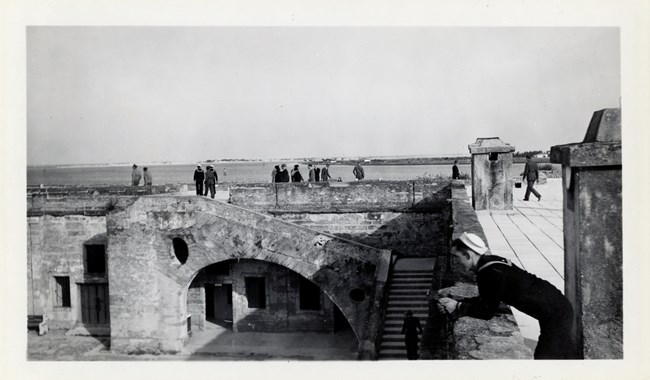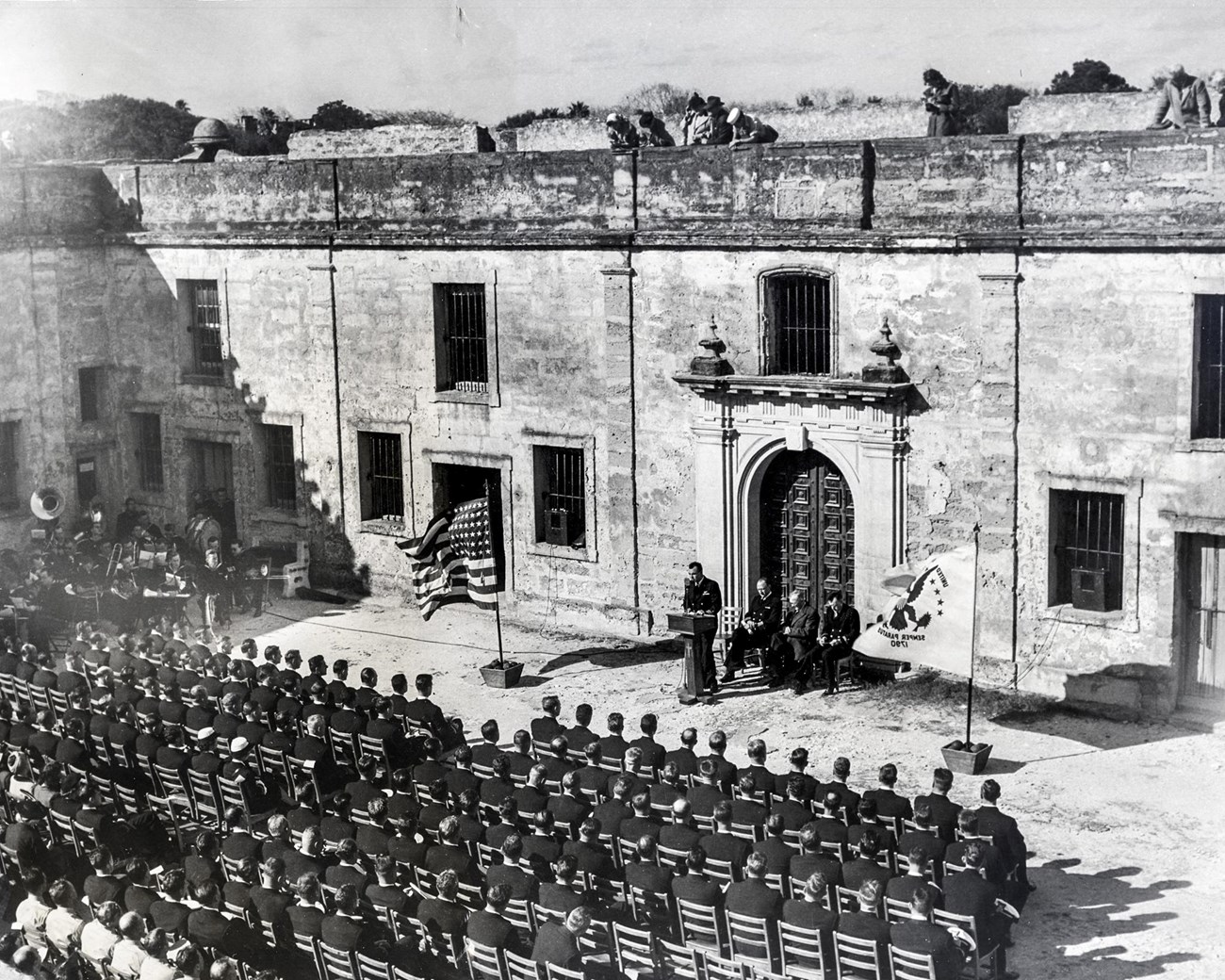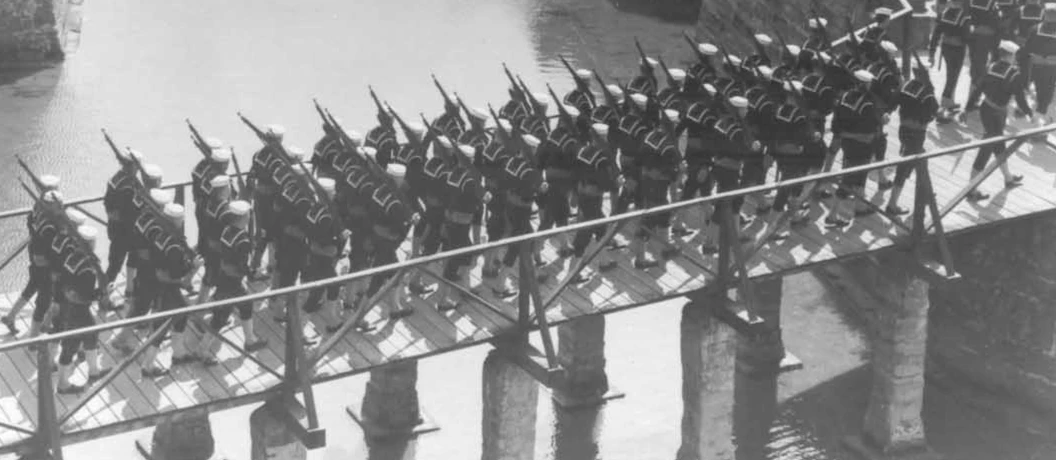
The Coming of WarWith the Japanese attack on Pearl Harbor in December of 1941, the United States entered into World War II. As the massive effort of converting the country to a wartime footing began, Florida became a vital resource to the nation. The results of Florida’s involvement would change the state forever. Over the course of four years, Florida grew from a small, mostly rural and agricultural state into a massive industrial and training area preparing men and material for the war. Instead of tourists, Florida was soon filled with recruits. Many of these servicemen and women returned to the Sunshine State when the war was over, contributing to the State’s growth. Military InstallationsFlorida's weather conditions, flat land, and miles of accessible coastline made it ideal for the building of military training bases, especially for aviation and amphibious landing operations. By 1942, Florida had over 172 military installations, ranging from relatively small specialty camps to extremely large bases. Camp Blanding near Starke became Florida's fourth largest city, growing to 180,000 acres and housing 55,000 soldiers at a time. There were forty airfields actively training military personnel throughout the state. Likewise, Naval Stations and Airfields lined the coast from Pensacola in the panhandle to the newly built Mayport Naval Station near Jacksonville. Many of these sites are still active military installations today. Others have been transformed and are now the core of Florida’s State Park system. Economic StimulusThe war effort sent large amounts of money into Florida, which led to rebuilding and growth after the devastation of the Great Depression. War contracts helped to rebuild Florida's manufacturing, agricultural, and tourism businesses. Defense contracts boosted industry and revitalized Florida cities. Florida's nickname almost changed from the Sunshine State to the Steel State. Florida's citrus industry also thrived. In 1942, Florida became the top citrus producing state in the country, surpassing California for the first time. Florida citrus growers patented a new process to create frozen concentrated orange juice. The cotton industry increased its profits. In 1945, researchers in Orlando discovered an insecticide, DDT, which became available for commercial use. The drawback was that the chemical's long-term effects had not yet been tested, and it would later have a negative impact on Florida's wildlife and agricultural industries. The war also changed the appearance of Florida cities with a surge in urban population. The boom had begun. The War Comes to St. AugustineLocal youth were being shipped off to the dangerous corners of the world, but until August of 1942, when The U. S. Coast Guard took over several local hotels, the direct impact of war on St. Augustine had been limited. The Ponce de Leon Hotel (now Flagler College) was converted into a Coast Guard barracks and boot camp, where young men learned the art of war. At any given time, as many 2,500 guardsmen were stationed in St. Augustine. Matanzas Bay was filled with zigzagging boats on maneuver. Even the famous protector of early St. Augustine, the Castillo de San Marcos, played an important part in the Coast Guard's war time role. “The vast grounds of the Fort area were in daily use by boot training companies and here thousands learned close order drill with as many as eight companies deployed there on most days," reported a local newspaperman. The Coast Guard also received permission from the National Park Service to turn four of the Castillo’s casemates into classrooms and use the courtyard for graduation ceremonies. 
Submarines off the Florida CoastThe state's vulnerability became evident shortly after Pearl Harbor. In early 1942, German submarines opened an offensive, code-named Operation Drumbeat, against the virtually undefended Allied shipping lanes along the east coast. Before the carnage was over, nearly 400 ships had been sunk and thousands of lives lost. Dozens of ships were torpedoed just off Florida's Atlantic coast, as were others in the Gulf of Mexico. German submarine captains used the light of coastal cities to silhouette their targets. Oil, debris, and dead bodies washed up on the beaches mixing, with the driftwood and seashells along Florida's once-pristine coasts. 
Prisoners of War: The Enemy in our MidstUnknown to many residents of the state, even at the time, over ten thousand German and Italian prisoners of war were kept in Florida during the war. Housed in a system of camps throughout the state, the POWs picked vegetables, harvested sugar cane, cut pulpwood, processed Florida’s massive fruit crop, and even served as custodial workers at undermanned military installations and Miami resort hotels. Service and SacrificeBecause of the need to supply millions of men in the service, almost everything was in short supply in the civilian sector. Strict rationing was put in place. Ration books were required to purchase basic necessities such as milk, eggs, gasoline, and clothing. Scrap drives were held in cities all over the state in an attempt to increase supply through recycling and build civilian morale. Rubber drives inundated collection points with tons of old tires. Metal drives brought tin cans, pots, car parts, and even some of St. Augustine’s old iron cannons to be melted down to make steel for the war machines. Housewives were encouraged to save their used lard to be made into explosives. Florida cities also held money drives to build airplanes and ships. Families were encouraged to grow and process their own vegetables and meats. "Victory Gardens” sprouted everywhere. Officials estimated that there were over 10,000 victory gardens in Tampa alone. After the WarOn May 5, 1945, the fighting ended in Europe. VE (Victory in Europe) Day was celebrated throughout the nation and around the world. On August 15, 1945, Japan surrendered and hostilities ceased in the Pacific. 
|
Last updated: April 28, 2020
